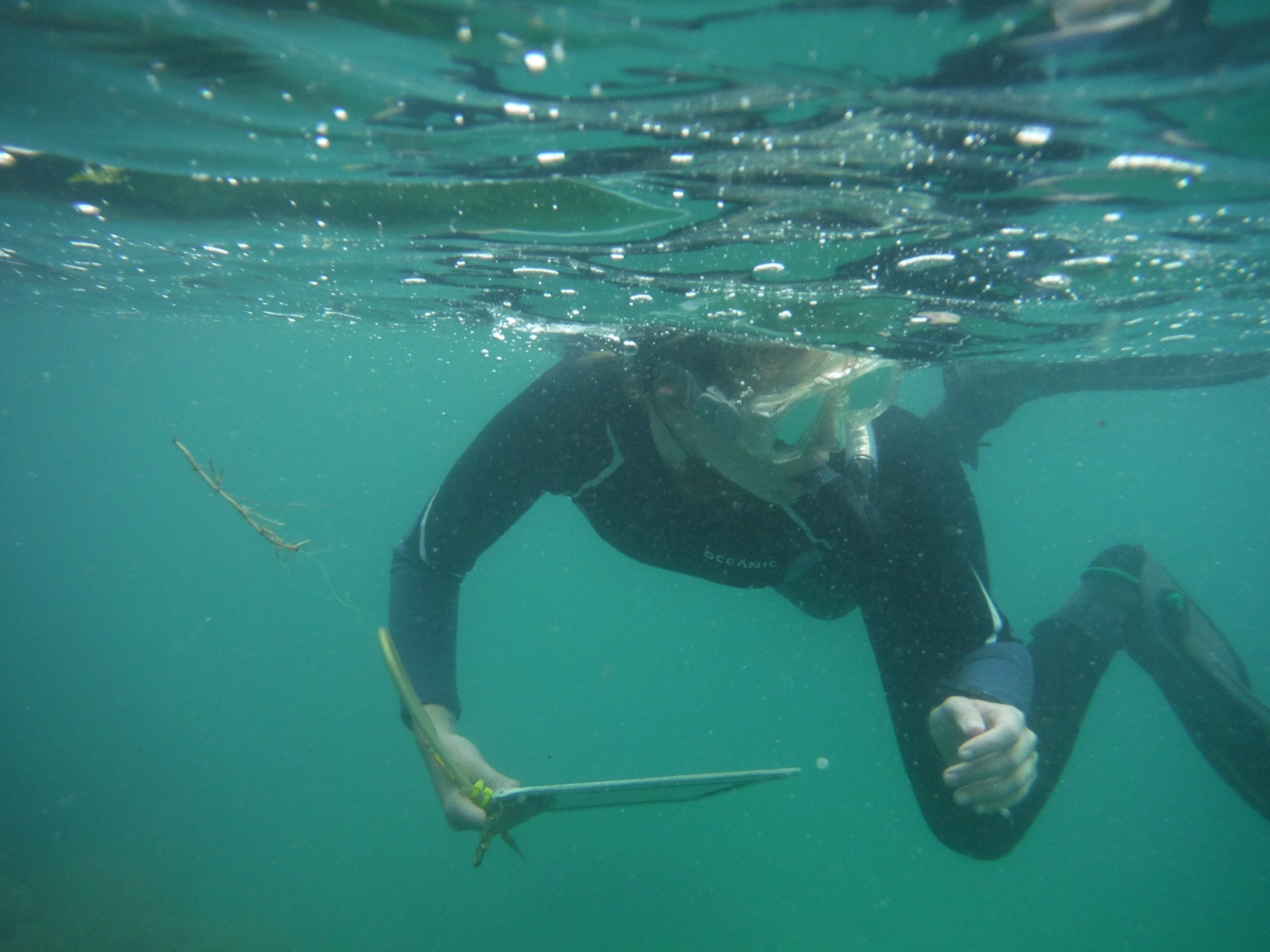During this morning’s dive, the group was tasked with using proforma to mark, measure, and sketch the cannon we found the previous day. This task was made increasingly difficult because of the large surge underwater and low visibility. Each cannon was measured along the shaft, muzzle, and cascabel. In total, eight cannons have been found and were measured by different diving pairs. My group specifically looked at Cannon #5, which measured a total of 8 feet long, had a 2 foot castabel, and a 4 inch muzzle height.
All were covered in concretion, making it difficult to measure features. Discovering and depicting the cannon was exciting, but also challenging, because of the concretion and coral (specifically fire coral) growth. On Cannon #5, the concretions along the shaft and surrounding the cascabel, creating a challenge to get exact measurement of the actual cannon instead of the overall concreted mound.
After the cannon proforma were complete, we used a corresponding coral proforma to document the types, number, and position of corals on each cannon. The distinction of different types of corals will hopefully lend to a greater understanding of the connection between archaeological artifacts and the fauna that survive on them. The relationship between the biology of the Cannon Site and the artifacts found there can provide information about the overall health of the site and the environment surrounding Cahuita. We also spotted other critters in and around the cannon, including fish, starfish, and sea urchins.
-Kelsey
